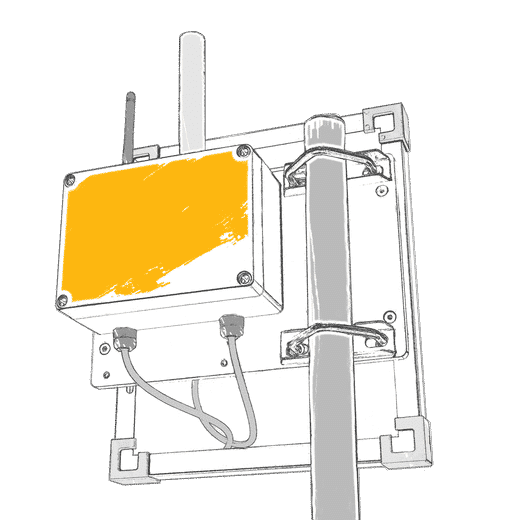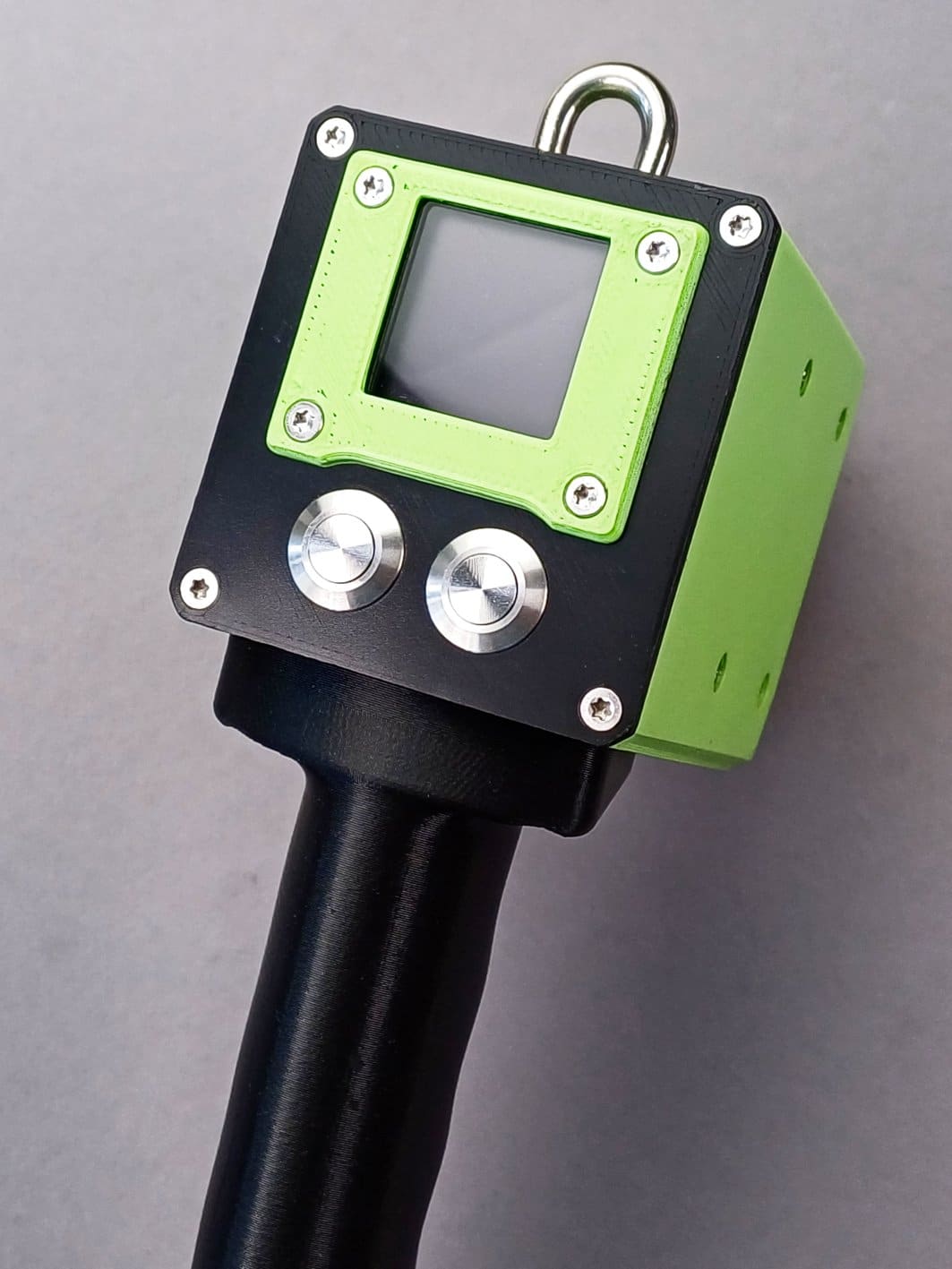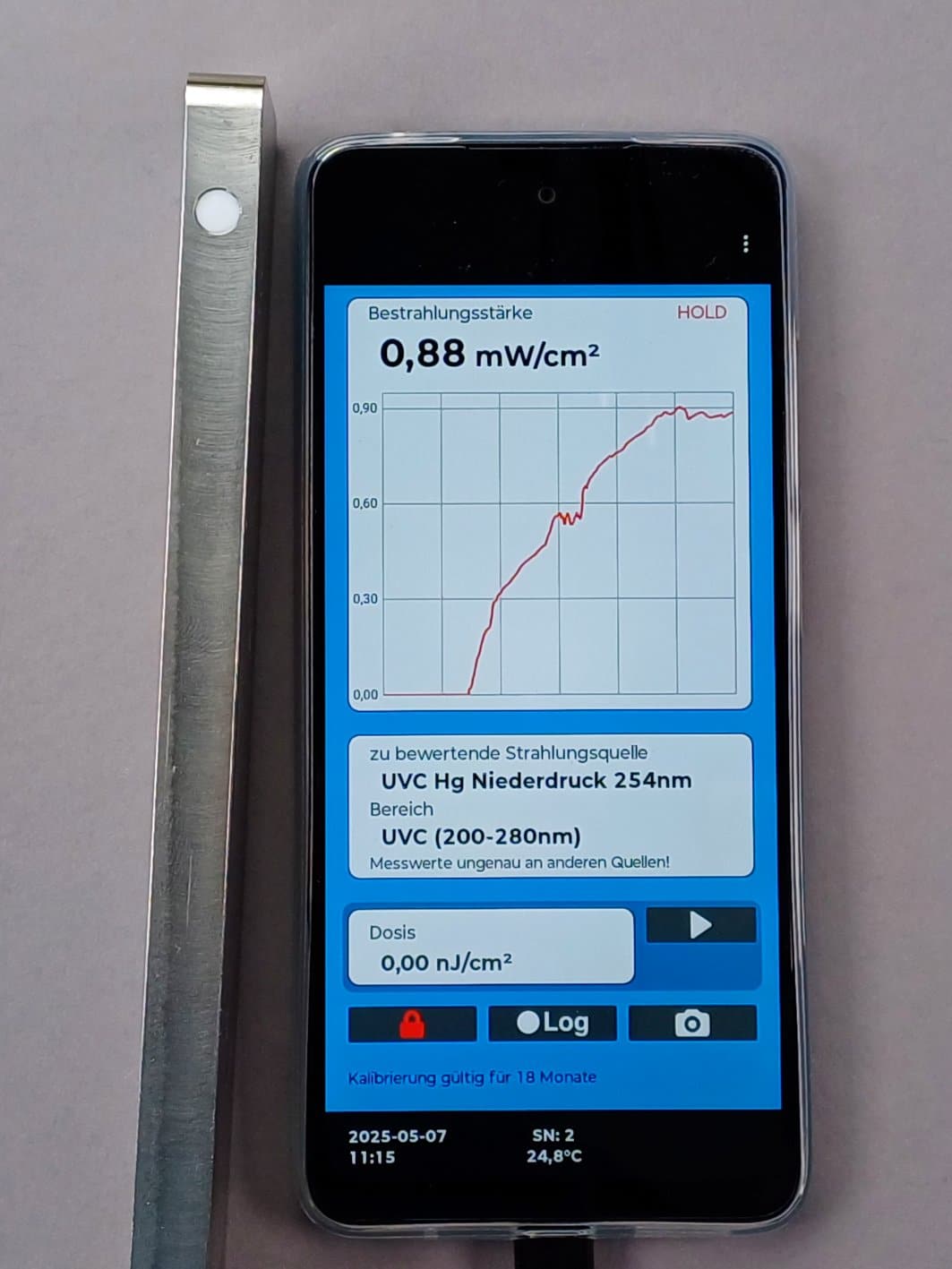Customized solutions

Founded in 2003, we are a medium-sized company with 15 employees – small enough to keep in mind our differences and to stay close to our common goal – big enough to have all the professionals needed for our work on board.
Our customers and we are united by the common goal of bringing products to perfection and thus supporting our joint economic success. Our flexibility and team strength are important guarantees for success.
For customer-specific adaptations, our two Doctors of Science, four graduate engineers (electrical engineering/computer science, photonics, procurement management, process science) and our technicians form powerful teams that implement the set task quickly and efficiently. Our distinctive customer orientation and profound solution competence form the basis of this work.
Millions of times our UV sensors provide reliable services – since February 18, 2021 even at a workplace several hundred million kilometers away: With the landing of the rover “Perseverance” on Mars, photodiodes specially developed by us for NASA started monitoring the function of the world’s first Deep UV (DUV) resonance Raman and fluorescence spectrometer UV called “Sherloc”.
Our product portfolio is understood as a modular system and ranges from the production of SiC photodiode wafers, SiC photodiodes, SiC hybrid circuits (TOCONs), UV measuring probes and UV measuring instruments to the handling of calibration services and is unique in this flexible form. This puts us in a position – based on our extensive standard range – to realize customer-specific variants even in small quantities and without time and cost surcharges.
Accordingly, our customers appreciate our quality orientation and ingenuity for over 20 years.
Photodiodes with properties according to customer’s requirements
Nothing found? Let’s find a solution together!
Or fly to Mars with us!
If our portfolio of SiC photodiodes and sensors does not provide a solution for your measurement task, we will be happy to develop new solutions together with you.
• Not only SiC: If you are looking for broadband detectors that cover larger spectral ranges between UV and near-infrared (NIR), multi-channel photodiodes based on SiC, GaP, Si or InGaAs can be produced.
• Emission peak detection: If you want to detect specific wavelengths, we integrate optical filtered into the TO housing of the photodiodes or the sensor optics.
• Multispectral photodiodes: An extension to multispectral sensors (2, 4 or more spectral channels) is easy to implement on the basis of broadband detectors using appropriate filters.
• Highest demands: For scientific or metrological applications where large-area detectors are required, we offer special formats and corresponding housings.
• Spatially resolved detection: Line arrays can also be produced on the basis of SiC and thus enable spatially resolved measurements, e.g. spectrometric measurements in the UV without sensitivity to visible radiation.
The optical and electrical characterization of the developed components is carried out in our metrology laboratory, which works in accordance with DAkkS 71 SD 0 025 and ISO 17025. Our production, which has been ISO 9001 certified since 2013, guarantees consistent quality at the highest level.
Our team of experts with more than 120 years of scientific and engineering expertise will support you in implementing your ideas. Contact us if you are looking for a photodiode specially adapted to your requirements, single or multi-channel, with or without integrated measuring amplifier.
TOCON with customized product range extension
TOCONs are SiC photodiodes in TO5 package with integrated transimpedance amplifier, which converts the photocurrent into a 0…5V measuring voltage. A TOCON is high-tech on smallest space, well protected by a solid metal housing. The TOCONs produced since 2008 are standardly produced in currently 55 variants, which are all in stock in at least medium quantities at any time. Depending on the variant, the components must be able to detect UV radiation in the range of 13 orders of magnitude – from a few pW/cm2 for UVC fire detection to several tens of W/cm2 for UV curing processes. In some cases, they must be able to reliably withstand high temperatures and vibrations. Behind the TOCONs is a team of electronic and optical engineers who maintain and continuously improve the series. We regularly carry out special adaptations for our customers. These can be, for example, non-saturating TOCONs with a logarithmic gain curve or TOCONs specially designed for fire detection in vehicle engines (adaptation of the dynamic behavior), which can be used up to 120°C. An important current application-specific modification are also special TOCONs for flame monitoring in novel hydrogen home heaters.
UV Measuring Probes with optimal adaption to the measurement task
Our UV measuring probes mostly consist of a robust metal body with radiation input and signal output. The core task of an sglux measuring probe is absolute reliability and reproducible measured values over many years – in adverse environmental conditions such as strong temperature fluctuations, high water pressure or extreme UV radiation, often in combination.
Each of these probes contains a SiC photodiode as well as optical and electronic components. Within a few days, we can assemble more than 400 different probe variants – adapted to the respective application – from components that are always in stock. Our engineers have master simple analog circuits as well as complex setups with integrated microprocessors.
Even if the 400 different standard variants can cover a large part of the applications in industry and research, our customers are regularly pleased with our solution expertise for products specially adapted to the environmental conditions, such as a probe that controls a UV curing process while being exposed to contamination by dusts and vapors in addition to very high temperatures. We solved this problem with a pneumatic purging and cooling system, which sets the window glass in permanent vibration to prevent deposits.
UV Radiometer with adaptation to customer’s requirements and new standards
Based on a sglux sensor, our UV radiometers serve as a reference in industry and research. “Measure-Understand-Evaluate” is our motto for our instruments whose software and display logic are adapted to the specific customer requirements by our IT engineers. This flexible and rapid response to the specific application is our unique selling point in the market of UV measuring instruments.
A practical example is the risk assessment at the workplace due to UVC radiation. Our “Safester UVC” not only provides the measured value in numbers, but the measured value is also converted by means of a special algorithm taken from a standard into clear recommendations for action or hazard information (e.g. intuitively understandable pictograms or graphics), which can also be easily understood and followed by untrained personnel. To equip the UV-Index measuring network of the Federal Office for Radiation Protection (BfS), we produce low- maintenance autonomous UV index measuring stations, which send the measured values to a central server via the mobile network. The power supply is provided by solar cells. We are currently carrying out scientific work in the field of UV measuring equipment in cooperation with the Federal Institute for Materials Research (BAM). This involves the development of a UV sensor-based module for detecting organic compounds on the basis of their ozone-excited UV emission.
Calibration with implementation according to customer’s specifications
Throughout the period from 2008 to 2018, we were allowed to learn our craft thoroughly in several governmental funded projects by the Physikalisch-Technische-Bundesanstalt in Braunschweig (PTB), Department 4.11 Spectroradiometry. Together with the PTB, for example, the world’s first calibration standard for strong UV radiation was created, which now sets standards at the PTB, at the Technology Center for Water in the DVGW (TZW) and at sglux and serves as an international reference for strong UV radiation. For our head of calibration laboratory, in principle every calibration order is a customized project – with its individual challenges, which we are very happy to meet in the service of our customers. In the course of this work, our laboratory is constantly being expanded and improved, so that almost all the different UV radiation sources and processes required for calibration work are now established in-house.
Showing the single result
-
Customized Solutions
Download PDFProduct Description- download PDF





